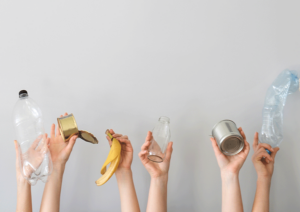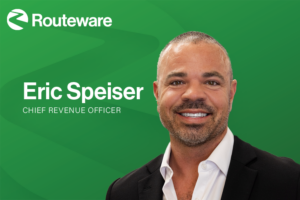Rushed for time? Download this Guide and read at your own pace.
Introduction
Hey there, recycling pro!
Breathing fresh life into your community’s recycling program is what you were hired to do, and you’re up to the challenge. Long ago, you committed to recycling yourself.
Heck, you were just a kid!
Truth is, you probably reduce and reuse more than you recycle. And you’re always looking for new ways to inspire the people around you to recycle more and recycle right. After all, it’s not just tossing stuff into the recycling bin that counts – it’s when we do it, how we do it, how often we do it, and what we toss into the bin that makes a difference in the health of our planet year in, year out.
You’re all in, ready to help your community change behaviors and make a long-term commitment to recycling. You’re ready to use digital tools to improve your programming efforts, but your true love is connecting with people.
Where to begin? So glad you’re here.
The thing is, recycling is pretty simple – except when it’s not. There can be a lot to remember for residents who are busy living their lives. You get it. That’s why you want to spend as much time as you can out in your community, smiling into the faces of the residents in your flock and helping them do the right thing. Unless you’re lucky enough to have an endless budget–it’s okay, you can laugh—it can be hard to juggle one-to-many communications, which are super important, with one-on-one communications, which are extra valuable yet so much more time and resource-intensive.
Of course, there’s a better way to educate using a mix of digital and hand-to-hand techniques to help you get the recycling results you need. (Gotta work those metrics and show those gains!)
This guide can help. It was curated with expertise from a panel of the best, brightest and most digitally savvy recycling experts in North America. Use it for inspiration. Take it to your leaders as legit research to back up your own, modern ideas. But most of all, keep it handy for when the going gets tough, as all change-makers know it can. You’re not alone. Together we’re making a difference, one recycling cart at a time.
Let’s jump in.
I. Just the Facts, Ma’am
No time to read? Here’s a digest version! Consume these tips in five minutes or less. (For real, we counted!)Evaluate & compare: Aim to collect 400-600 pounds of material per year, per household, to match high-performing programs.
Confirm first: Confirm what’s recyclable with your MRF in light of international market changes.
Be clear & concise: Use phrases and bullets, eliminate repetition and stay consistent.
Rebrand an old event: Just changing the name of a collection event could lead to 3X more diversion!
Completely normal: Cast recycling as a social norm in your communications and watch tonnage rise by as much as 25 percent.
Stop the negativity: Don’t focus too much on what not to do in recycling. It could actually encourage bad behavior!
Harness wish-cyclers: Get your most enthusiastic but sometimes error-making recyclers on board with nitty-gritty messages that satisfy their desire for details.
Use the 1-5-50 rule: One thought only can be communicated successfully via broad media. Five things will be heard in a group setting. More than 50 ideas need to live in a searchable database.
Hone with data: Use the search information your residents provide via online tools and apps to guide future messaging.
Go mini: Launch a short-lived, extra-focused campaign to get the word out on a single tough issue.
Focus on the cart: Adding recycling information—or at least a URL—to the receptacle gives residents access to info right when they need it most.
Use video: Telling stories with video enables you to grow a grassroots community of recyclers so you’re not the only one spreading the good word.
Save time & money: Use digital waste and recycling communication tools, such as ReCollect to reduce call volumes, brand your program and delight people.
Have fun: Get together once a year with your recycling community to celebrate and share.
Look ahead: Use a recycling pledge to encourage residents to recycle more—and check-in to make sure they’re keeping their promises!
II. The Rest of the Story
You stuck around! Now we’re blushing. Here’s the research behind the quick tips from Section I.

1. Evaluate and Compare
Getting a handle on your recycling program’s current performance— and how much you can expect to improve—is a great way to start making positive changes. High-performing programs collect about 400-600 pounds of material per household, per year.
How does your program stack up against others like it? Check out these stats from The Recycling Partnership’s website to gauge your current level of success:
- 400 pounds per year, per household: If your hauler is collecting single-stream recycling in industry-standard 95-gallon containers every other week, most households in a strong system will recycle about this much.
- 600 pounds per year, per household: What’s possible under the above scenario in a high-performing, digitally-enhanced recycling system.
* Annual average from The Recycling Partnership’s online assessment tool: https://recyclingpartnership.org/assessment-tool-intro/.
2. Confirm What’s Recyclable
Believe it or not, about 60 percent of municipal recycling programs communicate conflicting information to residents about what goes where. This often happens because programs change over time.
How long has it been since you confirmed what’s recyclable with your MRF?
You know what’s recyclable in your community, right? In its 2017 MRFShed Report, The Recycling Partnership revealed that a majority of communities (60 percent) published conflicting information about what’s recyclable. If it’s been more than a year since you surveyed your MRF to learn what they’re recycling, it’s time to ask.
Publishing correct information about what’s getting recycled is especially important in light of China’s so-called trash ban, which continues to impact domestic recyclers.
With major news coverage of the legislation under headlines such as “China’s Import Ban Broke Plastics Recycling” (National Geographic, June 2018), residents may be understandably wary of their good-faith recycling efforts going to waste—literally.
Savvy recycling educators can use this moment to build trust and improve communication:
- Confirm what your MRF is actually recycling using a tool such as this one: https://recyclingpartnership.org/mrf-survey/.
- Evaluate your communications to ensure they reflect what you find
- It goes without saying to focus attention on your online messages first. According to a 2017 Harris Poll cited by The Recycling Partnership’s MRFShed Report, 52 percent of residents use the Internet for recycling info.
Source: The Recycling Partnership’s 2017 MRFShed Report: https://recyclingpartnership.org/mrfshed-report/.
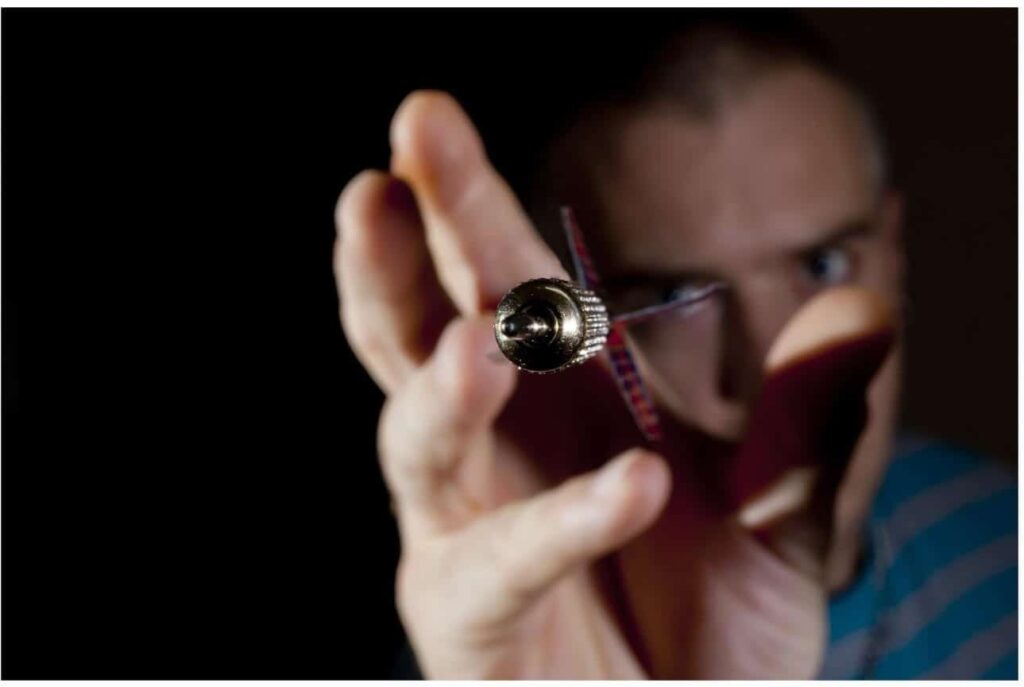
3. Make Recycling Instructions Clear and Concise
Recycling messages must be clear and to-the-point for residents to remember them. Luckily, there are a few easy rules and tools you can use to make sure your messages are on-point.
The research on attention is clear: Most people have an attention span of about eight seconds and can remember a string of seven items. It goes without saying, then, that recycling messages must be concise. The good news is, you don’t have to be a great writer to create clear, engaging recycling copy. Here’s how:
- Use phrases and bullets.
- Eliminate repetition.
- Focus on residents’ most-searched items. If using the ReCollect Waste Wizard, highlight the top seven most-asked-about materials.
- Stay consistent and repeat your message early and often. See No. 2 above.
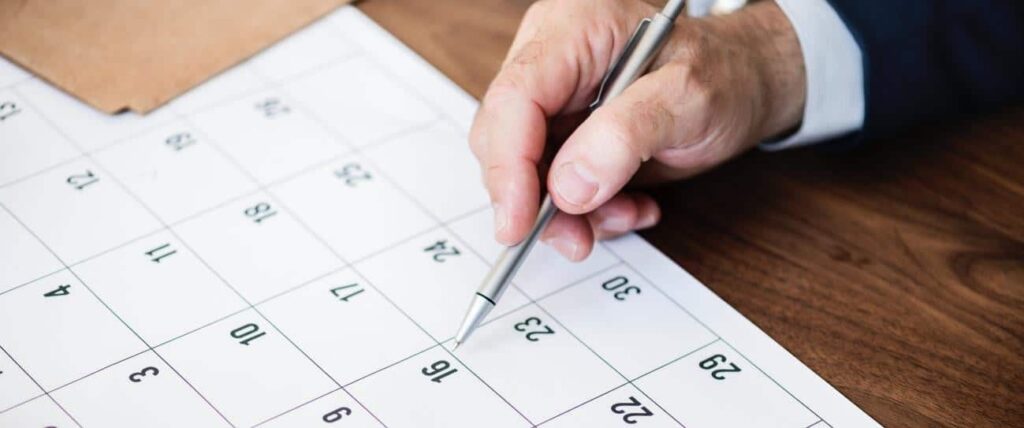
4. Rebrand Your Next Collection Event
Encouraging residents to participate in events doesn’t always require a lot of work. In one community, creatively rethinking the name of an ongoing event—and nothing more—led to three times more diversion!
Many municipalities host regular collection events for special items not handled through curbside programs. Oftentimes, these kinds of events experience ebbs and flows in participation.
The good news is, you can infuse new life into an event that’s functional but perhaps lost its luster through creative branding. Even a simple name change could work wonders.
Monica Boehringer, refuse and recycling coordinator for the city of Manassas, Va., used a name change to grow participation in a monthly drop-off event from 40 cars and 59 tons of material in 2014 to 500 cars and 155 tons of material in 2017.
How’d she do it? She rebranded the event as “RecycleFest.” The new name changed the tone, helped the event grow and even led to fewer incidences of illegal dumping of the collected materials. Easy!
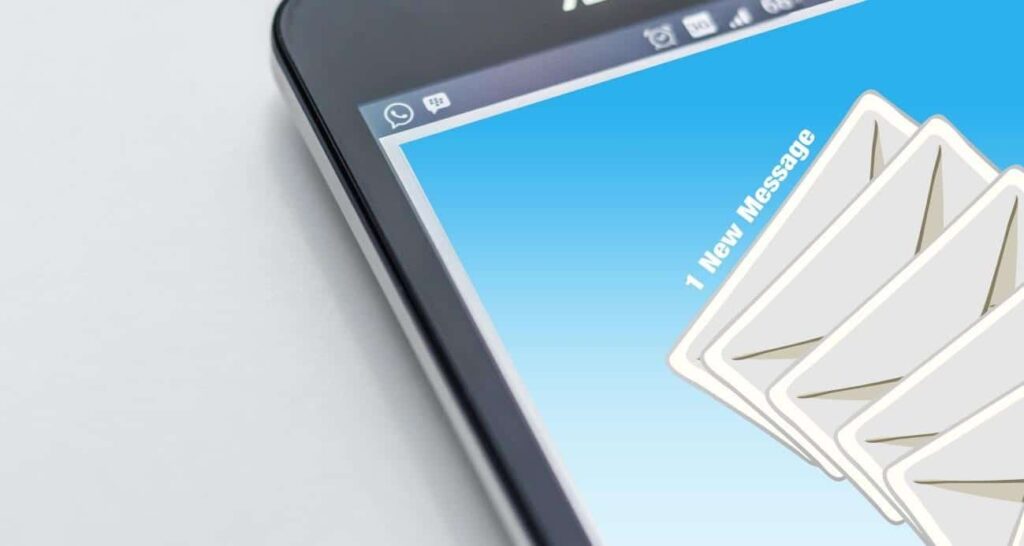
5. Turn Up the Pressure
Use digitally-delivered drip communication to inexpensively target areas in your community where recycling rates fall below the target range. Regular messages casting recycling correctly as a positive social norm could help you increase tonnage by 25 percent.
Digital communication, coupled with social pressure, is a great way to encourage residents to recycle more and recycle right. Think of it as a well-intentioned, neighborly reminder to encourage non-recyclers to do their part. Consider the following:
- Campaigns using social norms can help drive measurable behavior change.
- Casting recycling in a positive light, as something that everyone is doing, works.
- Carefully and briefly including not recycling as an outlying behavior—one that’s outside the norm in your community—can help reinforce positive recycling values.
Robert Cialdini, professor of psychology at Arizona State University, followed these steps to create recycling PSAs that increased recycling tonnage by 25 percent!
6. Stop Raising Awareness About What Not To Do
Shedding light on positive recycling behaviors can reap equally positive results, but did you know that too much focus on negative behaviors can encourage them? Keep recycling messages positive, and steer clear of focusing too much on what not to do.
In a June 2018 article in Psychology Today, Sara Gorman, Ph.D., MPH, and Jack M. Gorman, MD, explored whether raising awareness leads to behavior change. They concluded that while awareness campaigns are ubiquitous, they’re not all created equal.
In the public health arena, for example, Gorman and Gorman found that campaigns that highlight certain risky behavior can actually encourage the very behaviors they seek to discourage. The authors cite failed anti-drug-use campaigns, such as the well- known D.A.R.E. program as an example. By focusing on youth who used alcohol and drugs, these campaigns inadvertently led some teens who were not abusing substances to overestimate the number of their peers who were, which in turn led them to experiment themselves.
Applying this logic to recycling, we might decide to steer clear of issuing a press release about how not to handle lithium-ion batteries as many recyclers have done amid a streak of MRF fires caused by batteries in recent years. Instead, keeping a lighter tone and providing ongoing positive education about how we can properly dispose of batteries, e-waste and other potentially hazardous materials may prove to provide better outcomes in the long run.
7. Harness the Power of Wish-Cyclers
According to Waste Management, about 25 percent of the material placed in curbside recycling containers is trash—and an unknown portion of this is material that was “wish-cycled.” Otherwise good recyclers may be your worst wish-cyclers. Luckily, they’re an easy population to reach.
You know the wish-cyclers. They’re the ones in your community who want to recycle so badly, sometimes they toss the wrong stuff into the bin.
The good news is, wish-cyclers are usually “tapped in” to your education efforts. They use your website, “like” and visit your social media pages and subscribe to your e-newsletter. They probably even stop to chat with you at the municipal open house—but their optimism sometimes gets in the way of real compliance with the rules. When you give them a good reason to follow them, wish-cyclers can form a grassroots circle of community recycling leaders. Here’s how to do it:
- Listen to your wish-cyclers. Chances are, they’re talking to you. Encourage them to ask questions in your social media posts, and check which pages of your website your e-news subscribers are visiting via click-through reports.
- Address their concerns—plastics without numbers, plastic containers not recyclable in your system, organics, the list goes on—with communications that speak to the questions you hear.
- Get nitty-gritty. While most recyclers need high-level info, wish-cyclers crave details. Think about penning a blog post or short article for your e-news to more deeply inform and connect with these passionate residents.
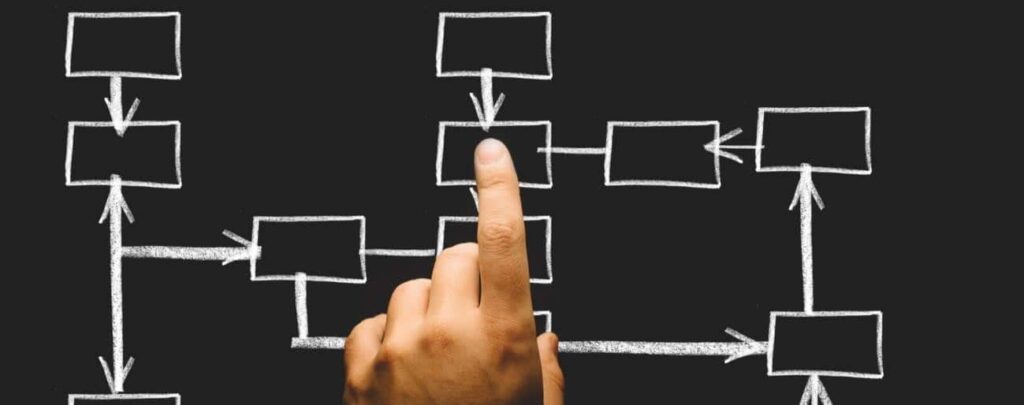
8. Use the 1-5-50 Rule
By using the 1-5-50 strategy in your recycling communications, you can do a better job of presenting information to residents in ways that will help them retain the information, thereby leading to better outcomes.
What’s the 1-5-50 rule? It’s basically a hierarchy for organizing information that keeps the listener’s ability to understand and retain information front-and-center:
- 1: In mass communications, such as billboards or quick radio and TV messages, keep take-aways ultra-simple. Try to hone in on just one thing. It might be “recycle more,” “visit our recycling website,” or “download our recycling app.”
- 5: If you need to share five pieces of information, you’ll need to use a messaging medium that allows you to hold your audience’s attention a little longer. They’ll need the processing time. Save multiple messages for in-person talks, presentations and events.
- 50: No resident will remember 50 things about recycling—they just can’t. For example, it’s not feasible to expect residents to memorize lists of what’s recyclable. The fix is to present such information in an “organized, scannable, searchable” manner. This is where digital tools such as a searchable database of materials and where they go for disposal, can really shine.
Source: Elizabeth Schussler, vice president of program design at Recycling Partnership

9. Use Resident Data to Hone Recycling Communications
If you’re able to collect data about your residents’ recycling questions, you can use it to improve your communications immediately. Tapping into search data from an app such as ReCollect can help.
Can you view the terms residents are searching for on your website? If you’re using an online tool or app to engage residents with “what goes where” information, such as ReCollect, do you review the terms for which residents search? Consider:
- Digital solutions can empower us to connect with residents because they give us improved tools for listening, which then allow us to hone programmatic information to reflect user concerns.
- In one community, the recycling coordinator reviewed a list of top-searched terms from the ReCollect Waste Wizard once per month and used the most- searched materials as a guide when making website updates. This information is also especially helpful when creating targeted educational materials, as does the Connecticut Department of Energy and Environmental Protection (www.recycleCT.com).
- Often-searched materials can be highlighted in above-the-fold homepage news items and included in regularly scheduled social media posts and e-newsletters.
10. Launch a Mini-Campaign
Sometimes we make the mistake of thinking that a recycling campaign needs to be big or overarching to get the job done. Not so. In fact, a small, targeted campaign can reap the best results if your goal is to reach the largest number of people possible.
Pick just one recycling issue: An item or material that’s misunderstood by your residents, or a collection problem you’d like to address based on metrics collected from online tools. Whatever the issue, a mini-campaign can help get the word out without much buy-in or hassle:
- Place a banner on your website that links to a single page about the issue or idea
- Include a “digest” version of the page in your next e-newsletter, with a link to the web page
- Create three social media posts per week for each of your accounts -say, for three months – and schedule them to run in advance
- Add a one-sentence reminder (with a link) to digital collection reminders you’re sending via any recycling software you’re using
- Create an interactive sorting game to play with kids at the next community event you attend. After all, more attention goes to booths with some kinetic energy.
- Remember the 1-5-50 rule and keep it simple (See No. 8)
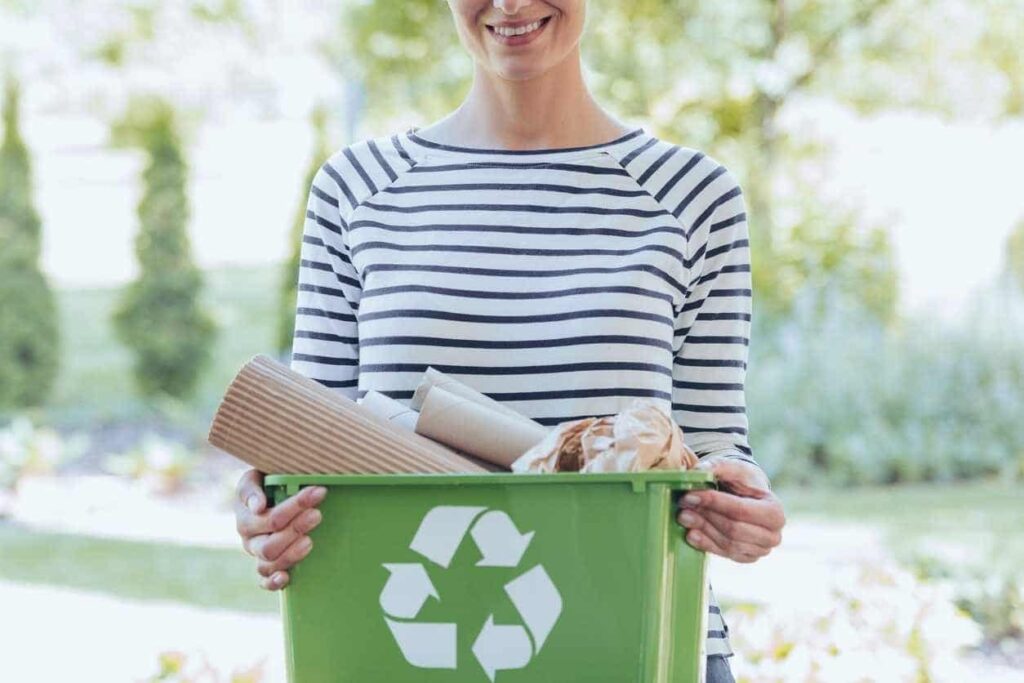
11. Focus on the Cart (or Bin)
This idea is a bit more long-term, but it addresses an important issue: Providing a connection to recycling information at the time of recycling, which is when most recyclers say they need it most.
Providing at-the-bin education takes strategy and buy-in, but it’s worth the extra effort. If you’re able to influence the heat stamp or the labeling on the carts or bins in your community—perhaps in the case of replacement containers—then by all means, do it. Consider the following:
- Simple, pictorial labels indicating what’s recyclable and calling out the biggest no-nos (such as plastic bags) work best, according to several sources.
- If full labels are out of the question, even adding your website and on stickers can help.
- No room? Consider a quick-response (QR) code and helpful language such as “What goes in?” to empower residents to recycle right when they aren’t sure.
12. Tell Stories About Community Recycling Leaders With Video
Here’s where your love of your people and the planet will really shine. (Yeah, we love our recyclers, even if they cause a little trouble now and then!) You don’t have to be an artist to share recycling stories: All you need is your phone.
Remember those wish-cyclers? You know the ones—the folks connecting with you on social media and at events. You can push your recycling communication to the next level with simple videos of your community recycling leaders.
You don’t need to be a creative writer, a film editor or a fancy artist to showcase their accomplishments in a way that will inspire non-recyclers to take part. All you need are the pre-installed video apps on your phone to tell resident stories.
- Why video? Video stories can connect us to other people, make us think, and inspire us to follow. Wasn’t it the great Wendell Berry who said that we don’t learn to be better from ourselves? Enter recycling stories.
- How? Start with a few simple questions. Perhaps “Why do you recycle?”, “What do you recycle?”, and “What helps you recycle?”
- All you do: Get your top three recyclers in front of your camera right at the curb with their carts–and shoot.
- Edit, but don’t sweat it: Cut each video to 1 minute or less, then share! Remember, videos don’t have to be perfect to be effective.
Need to be convinced of the power of storytelling? Check out the research of Paul Zak at the Greater Good Science Center, UC Berkeley. According to Zak, people care about stories because, quite simply, that’s how we’re wired. Stories actually change the chemicals in our brains and can lead us to make positive changes—like recycling more.
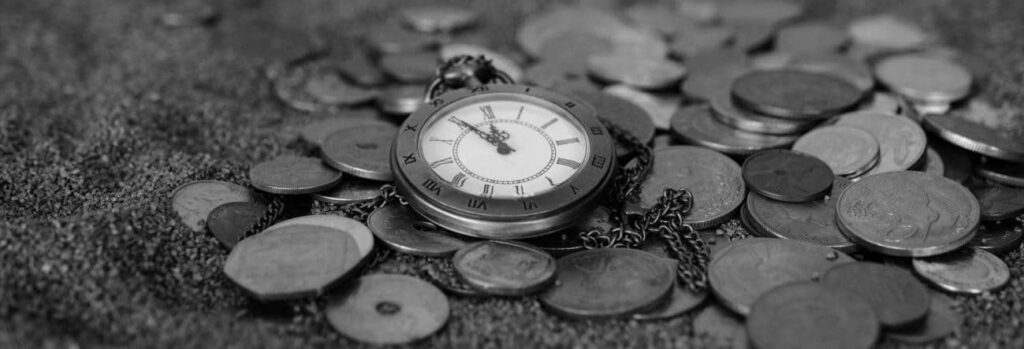
13. Save Time and Money—and Maybe Your Sanity, Too
When you’re tirelessly working to educate about the ins and outs of recycling, it’s easy to lose focus on what you really care about: the environment and the good people who are part of it. Enter new, app-based digital solutions to help you regain control.
Recycling software can help eliminate or automate the repetitive and mundane (yes, we said it) parts of your job. The right software can all but eliminate phone calls about collection days and replace tedious, wasteful mailings that can take weeks to prepare, only to end up in the recycling stream days later. Plus, the right solution can save money by reducing the amount of staff time spent performing tasks better managed through technology-based means.
According to a 2017 report by the Austin American-Statesman newspaper, Austin Resource Recovery saved $66,000 per year when they nixed printing and mailing paper recycling calendars, which a report had shown only seven percent of residents were using.
ReCollect, an affordable, easy-to-implement family of subscription-based apps for waste and recycling collection and education, is the leading solution in this category.

14. Party With Your People
Remember those wish-cyclers turned ideal recyclers? That community of grassroots supporters you’re always building? At least once a year, get together with them for a jam session, then listen.
In the recycling world, most of us have been trained to celebrate successes early and often—but it’s easy to forget this advice as we move from issue to issue. Don’t miss the opportunity to mark your milestones and tell residents when they really rocked.
One way to do this is to gather with a core group of recyclers at least once a year:
- Invite your best recyclers to an informal event in your municipal conference room, or at a park
- Meet on Earth Day (April 22) or America Recycles Day (November 15).
- Order some pizzas, if your budget allows.
- Present a brief “State of Recycling” report with triumphs and concerns. (No PowerPoint required.)
- Finally, turn the floor over to your attendees.
Have a notepad at the ready: You may well receive your marching orders.
15. Don’t Stop Thinking About Tomorrow
One simple way to continue building your community of recyclers is through a recycling pledge. Organizations from Keep America Beautiful and the Environmental Protection Agency to state and local entities have long used pledges to build on recycling successes.
Recycling pledges can take many forms, from paper documents you can share with residents at events and in classrooms, to online forms. The general idea is to encourage recycling by getting residents to sign a pledge about it. Here are a few tips for creating pledges that spur ongoing action:
- Be specific and time-driven. “I will recycle cans and bottles at home every day” is better than “I will recycle more.”
- Provide accountability. If you collect contact information on your pledge document, you’ll be able to follow up.
- Contact your pledges. Create an e-news list just for your recycling pledge- takers and follow up once a quarter with encouragement and tips.
If you keep on building your recycling community through the wise use of technology and in-person interactions, you’ll definitely reap the long-lasting environmental impact you seek.
Now there’s just one question. When do we get started?
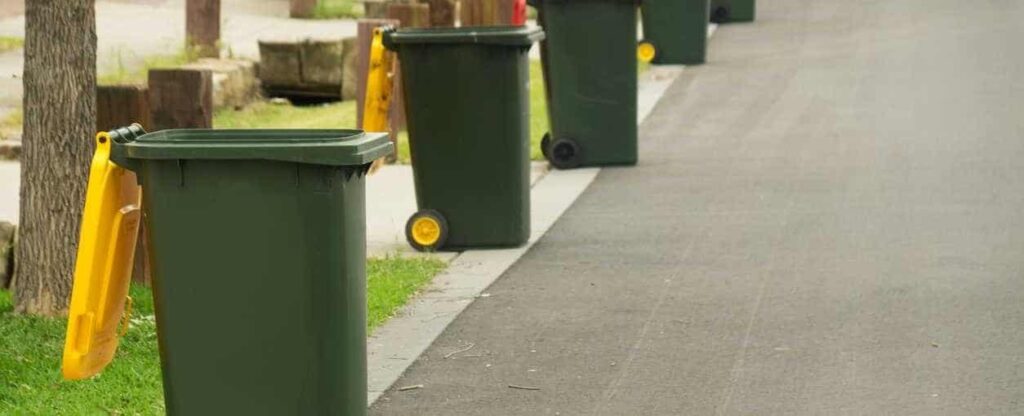
Learn More
ReCollect is a digital communications company that serves the waste and recycling industry. Our unique communication tools help governments, regional bodies and private haulers reduce contamination, increase operational efficiency and reduce call volumes.
Want to learn more? Let’s chat over a 20-minute phone call to get started.


